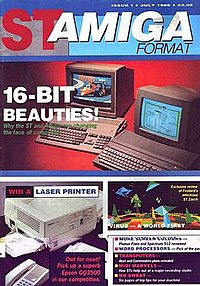
The Atari ST is a line of personal computers from Atari Corporation and the successor to the Atari 8-bit family. The initial model, the Atari 520ST, had limited release in April–June 1985 and was widely available in July. It was the first personal computer with a bitmapped color GUI, using a version of Digital Research's GEM from February 1985. The Atari 1040ST, released in 1986 with 1 MB of RAM, was the first home computer with a cost-per-kilobyte of less than US$1.
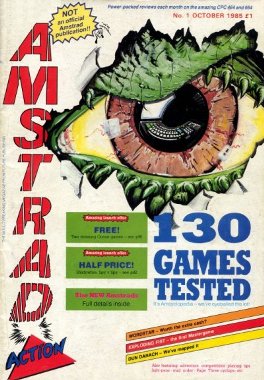
Amstrad Action was a monthly magazine, published in the United Kingdom, which catered to owners of home computers from the Amstrad CPC range and later the GX4000 console.
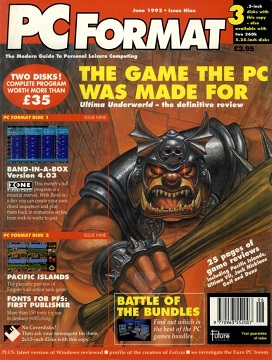
PC Format was a computer magazine published in the United Kingdom by Future plc, and licensed to other publishers in countries around the world. In publication between 1991 and 2015, it was part of Future plc's Format series of magazines that include articles about games, entertainment and how to get the most out of the platform. Despite the occasional mention of alternatives, PC Format takes the term 'PC' to mean a Microsoft Windows-based computer.

The One was a video game magazine in the United Kingdom which covered 16-bit home gaming during the late 1980s and early 1990s. It was first published by EMAP in October 1988 and initially covered computer games aimed at the Atari ST, Amiga, and IBM PC compatible markets.

Zero was a video game magazine in the UK, published monthly by Dennis Publishing Ltd. between November 1989 and October 1992. It won the InDin Magazine of the Year award in both 1990 and 1991, and was also briefly the best-selling multi-format 16-bit computer magazine in the UK.
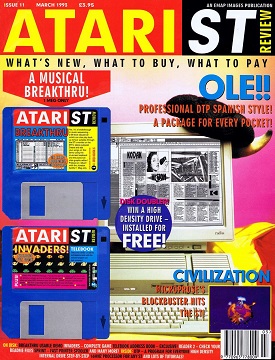
ST Review was a computer magazine in the United Kingdom covering the Atari ST during the early to mid 1990s. Published by EMAP and launched in May 1992 and placed at the "serious end" of the market, it catered to ST users who wished to use their ST for a variety of productive uses, such as its MIDI capabilities, programming or word processing, as opposed to casual gaming. The title was sold to Europress after EMAP decided to close it due to lower-than-expected sales and it ran for another two years with Freelance Editor Vic Lennard, full-time Deputy Editor, Tony Kaye and a full-time designer. This three-man team, along with several freelance contributors, kept the magazine popular for almost another two years before it finally succumbed to falling sales and the lack of success of Atari's Falcon, the expected replacement of the ST. This was due in part to the increasing PC market.

Oh No! More Lemmings is an expansion pack to the puzzle video game Lemmings by DMA Design. It contains 100 unique single-player levels and six new music tracks. The Amiga version also includes 10 two-player levels. The game requires either the install disk from the previous Lemmings, or, in a standalone version, the game manual, for use as a copy protector. The new levels are separated into five difficulty categories, each with 20 levels.
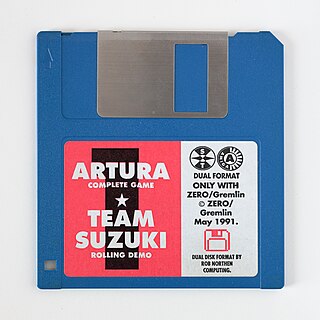
Dual format is a technique used to allow software for two systems which would normally require different disk formats to be recorded on the same floppy disk.
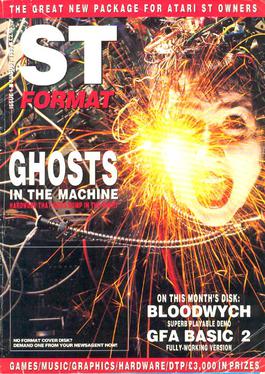
ST Format was a computer magazine in the UK covering the Atari ST during the late 1980s and early 1990s. Like other members of the Future plc Format stable - PC Format and Amiga Format, for instance, it combined software and hardware reviews with columnists, letters pages and a cover disk.

Epic is a space combat simulation game developed by Digital Image Design and published by Ocean Software for the Commdore Amiga and Atari ST in early 1992. A port to MS-DOS also appeared in the same year, followed by a version for the NEC PC-9801 in 1993. A sequel, titled Inferno, was released in 1994 for PCs only.

Atari ST User was a British computer magazine aimed at users of the Atari ST range. It started life as a pull-out section in Atari User magazine. From March 1986 onwards it became a magazine in its own right, outliving its parent by a number of years. It was published by Europress in London.

Starglider 2 is a 3D space combat simulator published in 1988 by Rainbird as the sequel to 1986's Starglider. It was released for the Amiga, Atari ST, MS-DOS, Macintosh, and ZX Spectrum. Instead of the wireframe graphics of the original, Starglider 2 uses flat shaded polygons.

Flood is a 1990 platform game developed by Bullfrog Productions. It was published for the Amiga and Atari ST by Electronic Arts. The objective is to collect all the litter and find the exit to the level.
CrossDOS is a file system handler for accessing FAT formatted media on Amiga computers. It was bundled with AmigaOS 2.1 and later. Its function was to allow working with disks formatted for PCs and Atari STs. In the 1990s it became a commonly used method of file exchange between Amiga systems and other platforms.
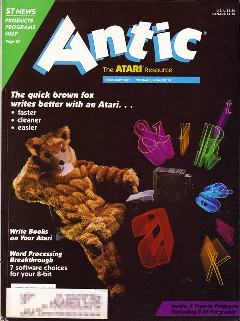
Antic was a print magazine devoted to the Atari 8-bit family of home computers and later the Atari ST. It was named after the ANTIC chip in the 8-bit line which, in concert with CTIA or GTIA, generates the display. The magazine was published from April 1982 until June/July 1990. Antic printed type-in programs, reviews, and tutorials, among other articles. Each issue contained one type-in game as "Game of the Month." In 1986, STart magazine was spun off to exclusively cover the Atari ST line.
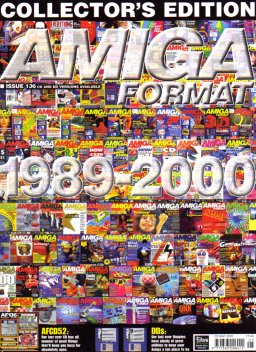
Amiga Format was a British computer magazine for Amiga computers, published by Future plc. The magazine lasted 136 issues from 1989 to 2000. The magazine was formed when, in the wake of selling ACE to EMAP, Future split the dual-format title ST/Amiga Format into two separate publications. At the height of its success the magazines sold over 170,000 copies per month, topping 200,000 with its most successful ever issue.
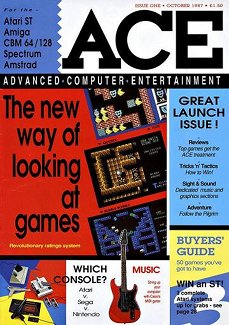
ACE was a multi-format computer and video game magazine first published in the United Kingdom by Future Publishing and later acquired by EMAP.

Hostages is a tactical shooter video game developed and published by Infogrames. It was released for the Acorn Electron, Archimedes, Atari ST, Amiga, Apple IIGS, Amstrad CPC, BBC Micro, Commodore 64, DOS, MSX, NES, and ZX Spectrum platforms in 1988. The game was released as Hostage: Rescue Mission in the United States and Operation Jupiter in France; the NES port is titled Rescue: The Embassy Mission.

Escape from Singe's Castle, also known as Dragon's Lair Part II - Escape From Singe's Castle, is a computer game for the Amstrad CPC, Commodore 64 and ZX Spectrum home computers, released by Software Projects in 1987. ReadySoft released it for the PC in 1989, and for the Amiga and Atari ST in 1990 and 1991, respectively. An Apple IIGS version was released in 2022. The game is sometimes referred to as Dragon's Lair II, but is not the official arcade sequel Dragon's Lair II: Time Warp.
The floppy disk is a data storage and transfer medium that was ubiquitous from the mid-1970s well into the 2000s. Besides the 3½-inch and 5¼-inch formats used in IBM PC compatible systems, or the 8-inch format that preceded them, many proprietary floppy disk formats were developed, either using a different disk design or special layout and encoding methods for the data held on the disk.
